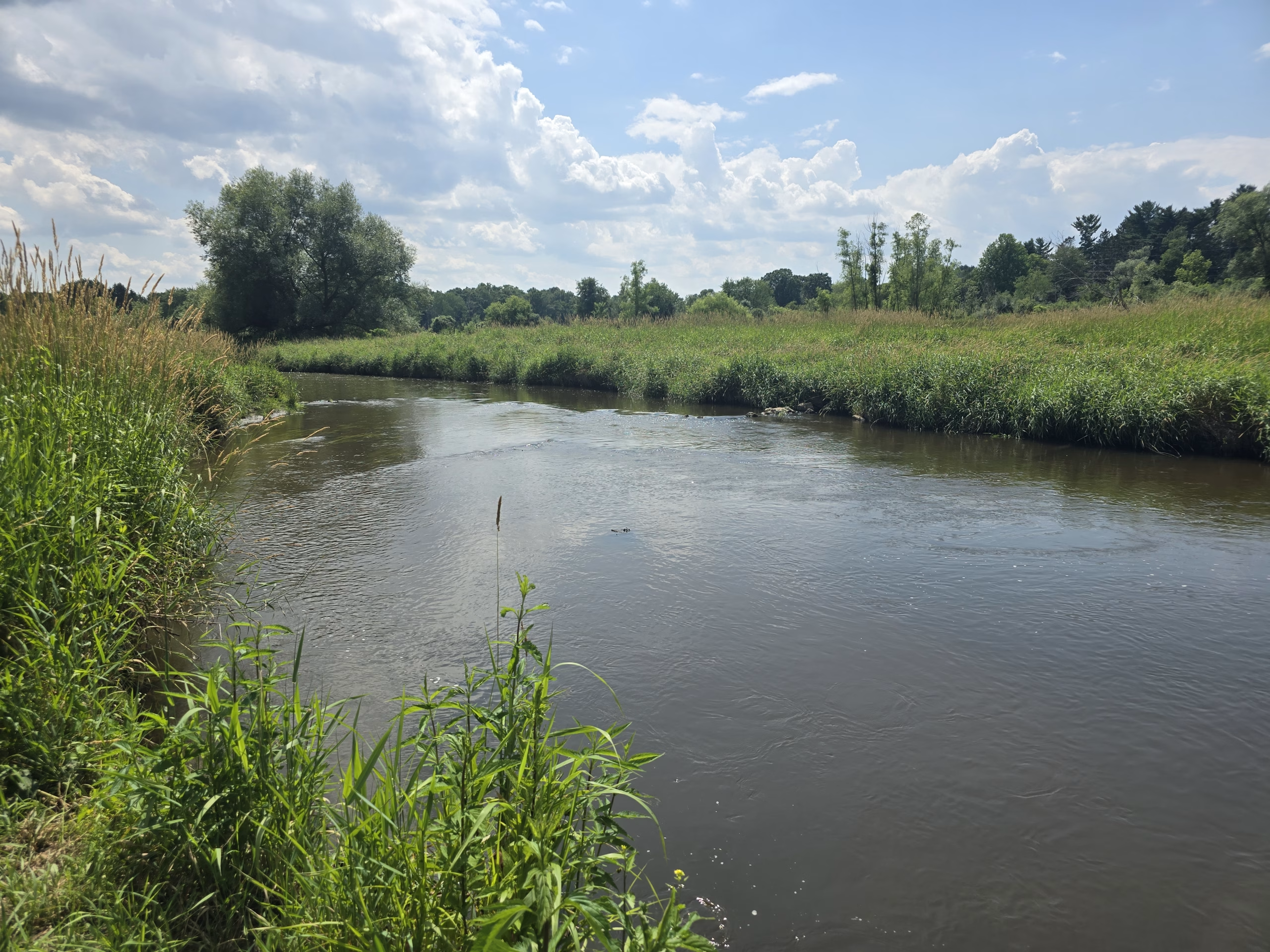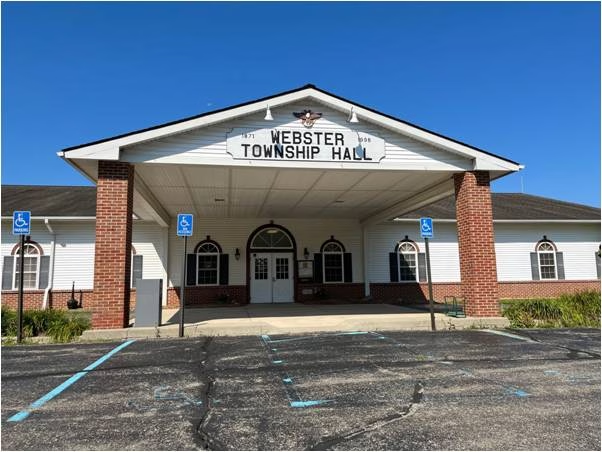City Council supports project to replace invasive species with native prairie plants
Photo: Mill Creek in Dexter. Photo by Doug Marrin.
At the June 23 Dexter City Council meeting, Terry Sharik of the Parks and Recreation Commission presented a proposal seeking Council’s support for a restoration project along Mill Creek. The initiative, led by Ann Arbor Trout Unlimited (AATU), aims to replace invasive reed canary grass and phragmites with native prairie species along the Mill Creek Trail between Forest Lawn Cemetery and the Grand Street Connector. The proposal must receive City approval before AATU can apply for a Dexter Community Fund grant to begin the work.
Sharik, a forest ecologist and retired Michigan Tech professor, emphasized the environmental degradation caused by invasive plants and agricultural practices in the Mill Creek watershed. “This presentation today has to do more or less with the same topic,” of controlling erosion, said Sharik, referencing earlier efforts to stabilize the area with seedlings.
Mill Creek, which drains a largely agricultural watershed, has long struggled with sedimentation and phosphorus loading, both of which reduce water quality and aquatic habitat. According to Sharik, “Mill Creek as a whole gets an F for phosphorus loading,” and “an F for E. coli from animal waste.” The creek also holds accumulated sediment from its dammed past. “Accumulation can be 10 to 12 feet of sediment. It’s almost like a building,” he said.
The proposed restoration zone covers approximately six acres, most of it overrun by invasive vegetation. “Between Forest Lawn Cemetery and the housing development, it’s almost entirely invasive reed canary grass, but also some giant reed grass,” Sharik said. He highlighted how dense growth blocks access to Mill Creek and degrades the viewshed, calling attention to the “big expansive area” obscured by non-native grasses.
Council approved Sharik’s proposal for support. If funded by the grant, the project would begin in fall 2025. Work would include mowing, selective herbicide application, burning, tilling, and reseeding with a mix of native prairie grasses and forbs. The project also aims to serve as a demonstration area to show local farmers and landowners how converting riparian zones to native plants can reduce soil erosion and generate revenue.





 8123 Main St Suite 200 Dexter, MI 48130
8123 Main St Suite 200 Dexter, MI 48130


